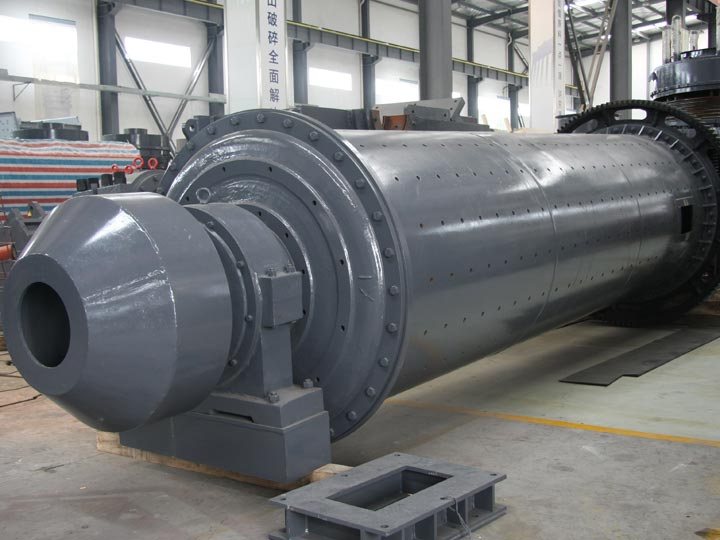
A ball mill is a type of grinder used to grind and blend materials for use in mineral dressing processes, paints, pyrotechnics, ceramics, and selective laser sintering. It works on the principle of impact and attrition: size reduction is done by impact as the balls drop from near the top of the shell.
A ball mill consists of a hollow cylindrical shell rotating about its axis. The axis of the shell may be either horizontal or at a small angle to the horizontal. It is partially filled with balls. The grinding media is the balls, which may be made of steel (chrome steel), stainless steel, ceramic, or rubber. The inner surface of the cylindrical shell is usually lined with an abrasion-resistant material such as manganese steel or rubber.
The ball mill is a key piece of equipment for grinding crushed materials, and it is widely used in production lines for powders such as cement, silicates, refractory material, fertilizer, glass ceramics, etc. as well as for ore dressing of both ferrous and non-ferrous metals. The ball mill can grind various ores and other materials either wet or dry.
There are two types of ball mill: grate type and overfall type, due to different ways of discharging material. Many types of grinding media are suitable for use in a ball mill, each material having its own specific properties and advantages. Key properties of grinding media are size, density, hardness, and composition.
Size: The smaller the media particles, the smaller the particle size of the final product.
Density: The media should be denser than the material being ground.
Hardness: The media should be harder than the material being ground.
Composition: The type of grinding media used can significantly affect the efficiency of the ball mill. For example, grinding with a steel ball will result in a different final product than grinding with a ceramic ball.
Ball mills are also used in pyrotechnics and the manufacture of black powder, but cannot be used in the preparation of some pyrotechnic mixtures such as flash powder because of their sensitivity to impact.
Ball mills are used extensively in the mechanical alloying process in which they are not only used for grinding but for cold welding as well, with the purpose of producing alloys from powders. The ball mill is a key piece of equipment for grinding crushed materials, and it is widely used in production lines for powders such as cement, silicates, refractory material, fertilizer, glass ceramics, etc. as well as for ore dressing of both ferrous and non-ferrous metals. The ball mill can grind various ores and other materials either wet or dry.
There are many types of grinding media suitable for use in a ball mill, each material having its own specific properties and advantages. Key properties of grinding media are size, density, hardness, and composition.
Size: The smaller the media particles, the smaller the particle size of the final product.
Density: The media should be denser than the material being ground.
Hardness: The media should be harder than the material being ground.
Composition: The type of grinding media used can significantly affect the efficiency of the ball mill. For example, grinding with a steel ball will result in a different final product than grinding with a ceramic ball.
In summary, the ball mill is a crucial piece of equipment in the mineral processing and pyrotechnics industries. It is used to grind and blend materials, and is widely employed in the production of a variety of materials, including cement, silicates, refractory material,
We have jaw crushers, impact crushers, cone crushers, sand makers and so on.
Mon - Sun, 0:00 - 24:00
24h Online Service
© Zenith. All Rights Reserved. Designed by
